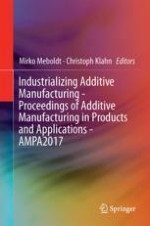2018 | Supplement | Chapter
Process Setup for Manufacturing of a Pump Impeller by Selective Laser Melting
Authors : Marc Huber, Jonas Ess, Martin Hartmann, Andreas Würms, Robin Rettberg, Thomas Kränzler, Kaspar Löffel
Published in: Industrializing Additive Manufacturing - Proceedings of Additive Manufacturing in Products and Applications - AMPA2017
Publisher: Springer International Publishing
Activate our intelligent search to find suitable subject content or patents.
Select sections of text to find matching patents with Artificial Intelligence. powered by
Select sections of text to find additional relevant content using AI-assisted search. powered by
